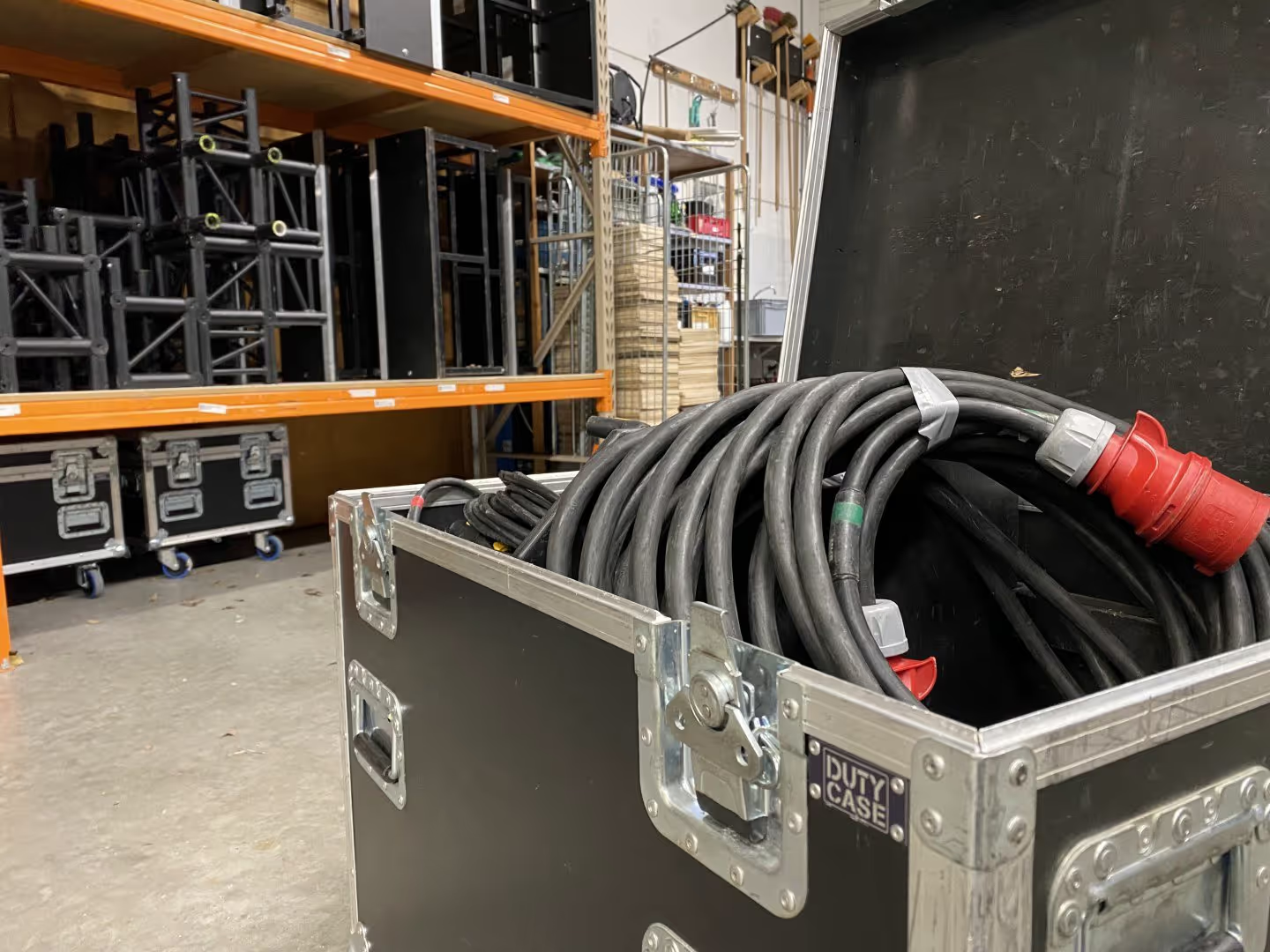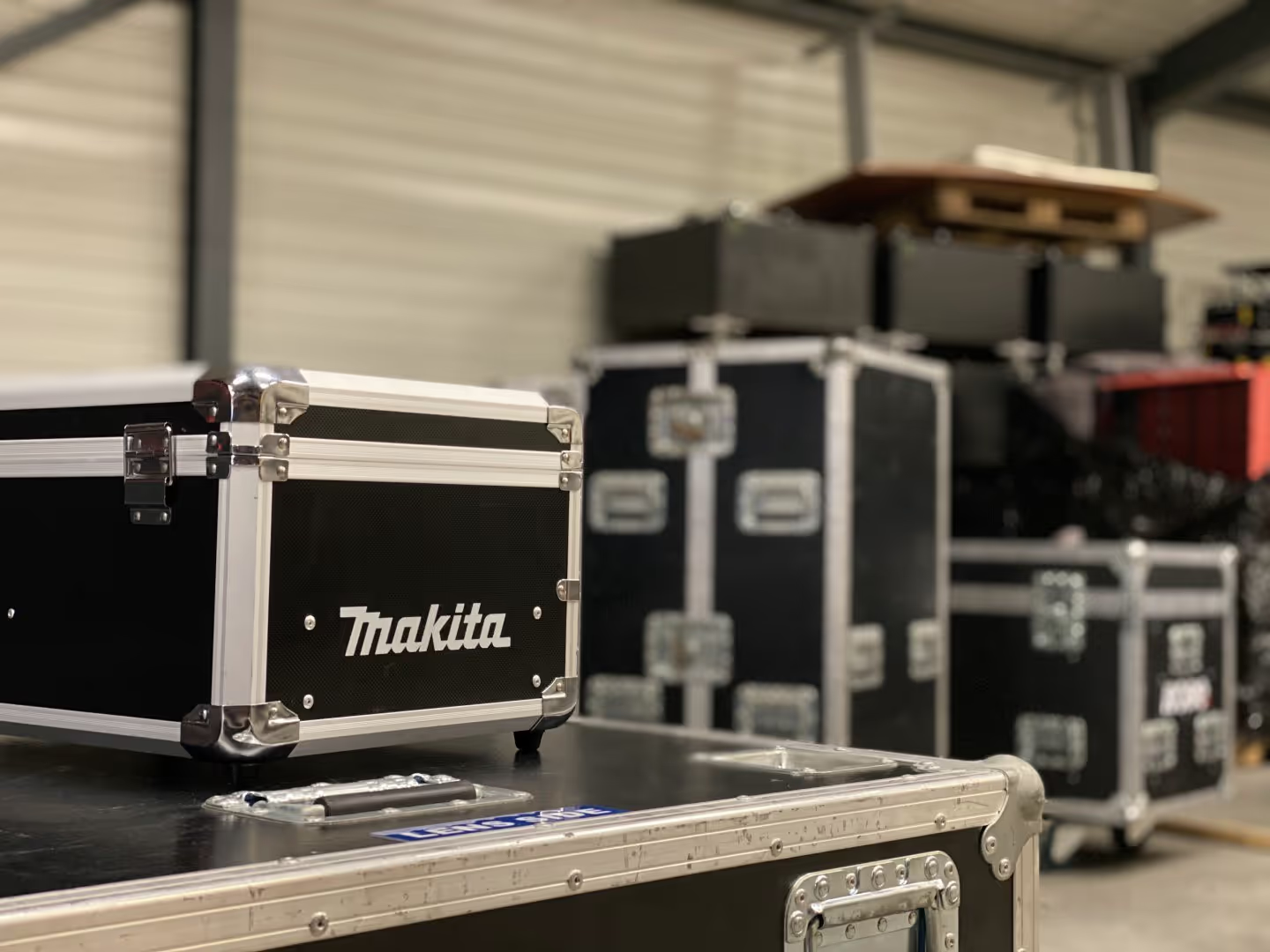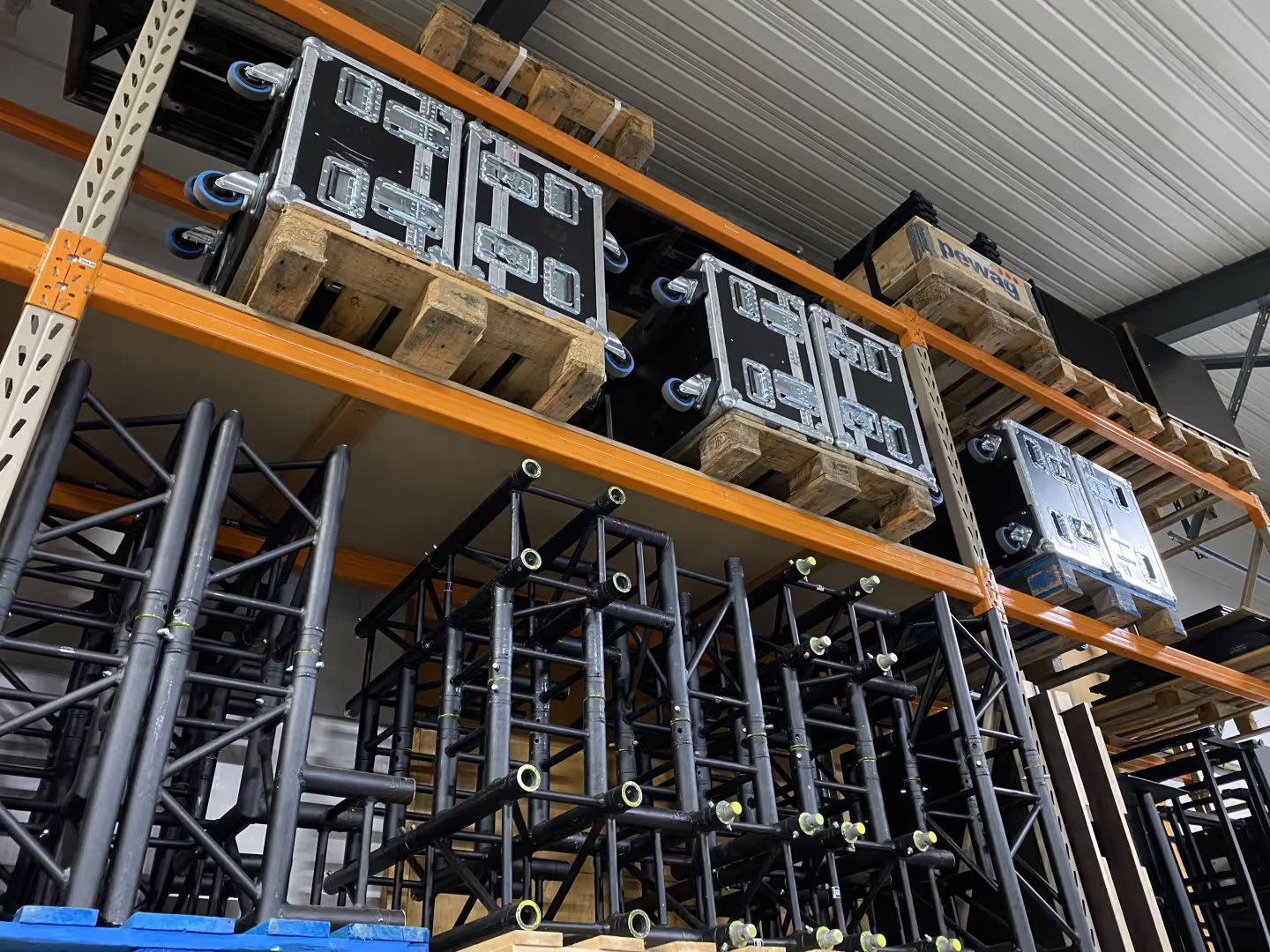The Essential Guide to Choosing the Right Labelling Equipment for Your Event Rental Business

In the fast-paced world of event management, efficiency and organisation are paramount, and the right labelling process and equipment can make all the difference. Whether you're coordinating a small gathering or a large-scale conference, choosing the appropriate labelling tools is crucial for streamlining operations, ensuring accuracy, and maintaining a professional image. From handheld label makers to industrial printers, the variety of labelling equipment available today caters to diverse event needs and budgets.
In this guide, we will delve into the key factors to consider when selecting labelling equipment for your events, helping you make an informed decision that enhances productivity and meets your specific requirements.
1. Understanding Labelling Equipment
2. Assessing Your Business Needs
3. Exploring Labelling Technologies
Understanding Labelling Equipment
Types of Labelling Equipment
The world of labelling equipment is broad, offering solutions for every type of event. At the entry level, handheld label makers are ideal for small operations, such as private events or community gatherings. They are portable, affordable, and simple to use, perfect for basic labelling tasks like name tags or signage. Moving up the scale, desktop label printers provide more capabilities and are suited for medium-sized events needing regular labelling.
These printers can handle a variety of label sizes and materials, making them useful for labeling everything from seating arrangements to vendor identification. For larger operations, industrial label printers are essential. They are robust, designed for high-volume printing, and can operate in demanding environments, such as festivals or conventions. Automated labelling systems, the pinnacle of labelling equipment, streamline the event setup by integrating directly with registration and management processes.
They offer unparalleled efficiency, ensuring quick and accurate label application. Each type of labelling equipment serves distinct needs, allowing event planners to choose based on their specific requirements and scale of operations.
Functions and Features
Labelling equipment offers a variety of functions and features to cater to different event needs. Basic features include the ability to print text, barcodes, and simple graphics for event materials. Some advanced models provide connectivity options, allowing integration with computers and event management software for seamless data transfer. This connectivity supports remote printing and efficient label management. Another crucial feature is the choice of label materials. Equipment can print labels on paper, plastic, or fabric, depending on event requirements.
Additionally, many devices offer variable print speeds and resolutions to balance quality and efficiency. For event planners needing custom designs, some models include built-in design software. This software lets users create unique labels with logos, themes, and intricate details that resonate with the event's branding.
Furthermore, certain printers come with automatic cutters, enhancing productivity by reducing manual intervention. Understanding these features aids customers in selecting equipment that not only meets current needs but also offers room for future growth and adaptation.
Importance for Events
Labelling equipment holds significant importance for events across various sectors. Efficient labelling enhances operational workflow by ensuring quick identification and categorisation of event materials. For registration management, accurate labelling is indispensable, reducing errors and streamlining attendee check-in processes.
In industries like hospitality and retail, clear labels improve guest experience by providing essential information, such as schedules and vendor details. Moreover, regulatory compliance often mandates specific labelling standards, especially in sectors like food and beverage. Here, labelling equipment helps meet these standards consistently. Beyond operational benefits, professional labelling contributes to an event's branding efforts. Customisable labels and signage can reinforce brand identity, showcasing logos and themes that make the event stand out.
Furthermore, labelling equipment supports scalability, adapting to increasing demands as events grow. By investing in the right labelling tools, event planners can achieve long-term efficiency, accuracy, and compliance, ultimately enhancing their businesses' competitive edge in the market.
Assessing Your Business Needs
Volume and Frequency
Understanding the volume and frequency of labelling tasks is crucial for selecting the right equipment for your events. For events with low to moderate labelling needs, such as occasional signage or name tag creation, a handheld or desktop label printer might suffice. These devices are designed for smaller print runs and can efficiently handle sporadic use without compromising on quality.
Conversely, events with high-volume labelling requirements, such as large conferences or festivals, will benefit from industrial label printers or automated labelling systems. These machines are built for continuous operation and can manage thousands of labels per day with minimal downtime.
Additionally, considering the frequency of labelling tasks helps in evaluating the durability and maintenance needs of the equipment. Frequent use demands robust machinery with reliable support and easy access to consumables like ink and label rolls. By aligning the labelling equipment with the volume and frequency of tasks, event planners and suppliers can ensure smooth, uninterrupted labelling operations.
Product Materials and Shapes
When choosing labelling equipment, it's important to consider the materials and shapes of the items being labelled for your events. Different items require different types of labels, and not all labelling machines can accommodate every material or shape. For instance, products with smooth surfaces, like event badges or promotional materials, may need adhesive labels that can withstand environmental conditions such as moisture or heat. Meanwhile, textured or irregular surfaces, such as décor elements or custom displays, might necessitate flexible labels that can conform to contours without peeling.
Additionally, the shape of the item can influence the type of labelling machine or mechanism required. Cylindrical objects, such as drink containers or swag bags, might benefit from wrap-around labelling systems, while flat or rectangular items, like brochures or schedules, could be more suited to top or side labelling machines.
Understanding these specifics ensures the labels adhere properly and remain legible throughout the event. By assessing your product materials and shapes, you can select labelling equipment that delivers precise application and durability of applied labels, enhancing both appearance and functionality.
Budget Considerations
Budget is a key factor in selecting labelling equipment for events, influencing both immediate and long-term operational effectiveness. It's crucial to balance cost with functionality, ensuring that the chosen equipment meets current event needs without unnecessary expenditure. Entry-level options for labelling equipment, such as handheld label makers, offer affordability and simplicity, ideal for small events or limited labelling tasks.
However, for larger events, investing in more sophisticated equipment may be cost-effective in the long run. Industrial printers and automated systems, while requiring higher upfront investment, often yield savings through increased efficiency and reduced manual labour.
Additionally, consider ongoing costs, such as maintenance, consumables, and potential upgrades. It's also wise to evaluate the equipment’s scalability, ensuring it can adapt to future event growth without incurring significant additional costs. By carefully assessing budget constraints alongside operational requirements, event planners can make informed decisions that align financial planning with practical labelling needs, ensuring sustainable and efficient event operations.
Exploring Labelling Technologies
Manual vs. Automated Systems
The choice between manual and automated labelling systems depends on the scale and nature of your event operations. Manual systems, such as handheld label makers, are suitable for small events or operations with minimal labelling requirements. They are easy to use, offer flexibility in design, and require a lower initial investment.
However, they can be labour-intensive and may not be practical for high-volume tasks, such as packaging or creating name tags for large conferences or festivals. On the other hand, automated labelling systems are designed for efficiency, handling large quantities with speed and accuracy. These systems integrate seamlessly into event management processes, reducing the need for manual intervention and minimising errors. Though the initial cost of automated labelling systems is higher, they often result in long-term savings through increased productivity and reduced labour costs.
Ultimately, the decision should be guided by the volume of labelling tasks, the desired level of automation, and the potential for future growth, ensuring the chosen system aligns with event goals.
Digital Printing Options
Digital printing technology offers versatile and efficient solutions for modern labelling needs in the event industry. It is a cost-effective solution that caters to event planners seeking high-quality, short-run printing with the flexibility to create customised designs. One of the main advantages of digital printing is its ability to produce vibrant colours and intricate details without the need for plates, which reduces setup time and cost.
This makes it ideal for events needing frequent label changes or a variety of designs, such as different themes for various sessions or breakout rooms. Digital printing also supports variable data printing, allowing for unique information, such as attendee names or personalised schedules, on each label.
Furthermore, digital printers are compatible with a wide range of materials, from paper and plastic to synthetic substrates, providing options to match specific event requirements. Overall, digital printing offers a cost-effective and adaptable solution for event planners aiming to enhance their labelling capabilities, increase efficiency, and improve brand presentation without the constraints of traditional printing methods.
RFID and Smart Labels
RFID and smart labels represent a leap forward in labelling technology for events, offering enhanced functionality and data management capabilities. RFID (Radio Frequency Identification) labels use radio waves to transmit information, enabling automatic identification and tracking of attendees or assets without direct line-of-sight.
This technology is particularly beneficial in event management, where it can significantly reduce time and labour associated with check-ins and minimize human error. Smart labels, which may incorporate RFID technology, can also embed additional sensor capabilities, providing real-time data on environmental conditions, such as crowd density or temperature, crucial for events in outdoor or dynamic settings. The integration of smart labels into event logistics enhances traceability, efficiency, and security.
While the initial costs of implementing RFID and smart labelling systems can be higher, the long-term benefits in operational efficiency and data accuracy often justify the investment. By adopting these advanced labelling solutions, event planners can optimise processes and gain a competitive edge in an increasingly data-driven market.
FAQ
Frequently asked questions
No items found.
Previous blog posts

The Ultimate Guide to Equipment Coverage in the Event Industry: What You Need to Know
The Ultimate Guide to Equipment Coverage in the Event Industry: What You Need to Know

Understanding Asset Tags for Equipment: A Comprehensive Guide for Event Businesses
Understanding Asset Tags for Equipment: A Comprehensive Guide for Event Businesses

